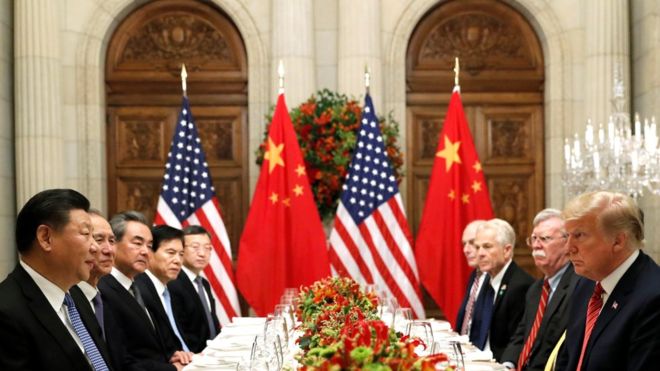Christmas appears to have come early to Arris and several other broadband gear vendors that rely on Chinese goods.
US President Donald Trump and China President Xi Jinping agreed Saturday, December 1, to postpone a US plan to jack up tariffs on Chinese goods to 25% — from the current 10% — starting January 1, 2019.
The agreement, forged during the Group of 20 summit in Buenos Aires, Argentina, will put that plan on the backburner for 90 days as the US and China try to iron out a longer-term arrangement between the two economic giants.
White House Press Secretary Sarah Huckabee Sanders expanded on the agreement in a statement, noting that Trump and Xi “have agreed to immediately begin negotiations on structural changes with respect to forced technology transfer, intellectual property protection, non-tariff barriers, cyber intrusions and cyber theft, services and agriculture.”
She added that China will also agree to purchase a “very substantial amount of agricultural, energy, industrial and other product” from the US to, as she put it, “reduce the trade imbalance” between the two countries.
Both sides aim to complete the effort within the next 90 days. If they aren’t able to reach a lasting deal at that time, the tariffs will be raised to 25%.
Temporary relief for US vendors
The postponement provides some relief to Arris Group Inc. (Nasdaq: ARRS) and other modem and broadband infrastructure vendors that had already made moves to absorb the current 10% tariffs and were noodling on how to deal with the coming 25% tariffs.
Arris, one of cable’s top suppliers that’s in the process of being acquired by CommScope Inc. , recently asked the US government for more time to alter its supply chain to accommodate for the coming, higher tariffs. Arris said the current 10% tariffs will impose about $200 million per year in added costs and suggested that the tariffs pose a threat to US 5G plans. Raymond James Financial Inc. (NYSE: RJF) has suggested that a 25% step-up in the US tariffs could add $500 million in costs to Arris in 2019. (See Arris: Tariffs Add $200M in Broadband Gear Costs, Threaten US 5G Plans, Arris: We’re Tackling the Tariffs , Arris Downgraded on Cable Modem Tariff Worries.
Zoom Telephonics , a smaller US-based player that makes cable modems, said recently that it is seeking ways to reduce its exposure to the tariffs by looking to move some or all of its production out of China and mulling possible price increases. (See Zoom: ‘Almost 100%’ of Product Line Hit by Tariffs .)
It was not immediately clear how a new deal between the US and China might affect ZTE Corp. (Shenzhen: 000063; Hong Kong: 0763) and Huawei Technologies Co. Ltd , two Chinese suppliers that have been under significant pressure from the US over national security concerns. (See Europe’s Telcos Fret as Walls Close In On Huawei, ZTE’s Future at Stake as Venezuela Deal Attracts US Scrutiny, Huawei Faces Further Heat From US Administration – Report, Amid the Rubble of L’Aquila, ZTE Tries to Rebuild and China’s ZTE Expects $1B Loss This Year After US Sanctions.)
According to CNBC, Trump did suggest that the talks could pave the way for Xi to approve a deal for Qualcomm Inc. (Nasdaq: QCOM) to buy NXP Semiconductors N.V. (Nasdaq: NXPI). (See Qualcomm’s $44B Bid for NXP Collapses.)
Though there’s skepticism that these talks between the US and China will lead to a long-lasting peace on the trade front, Consumer Technology Association president and CEO Gary Shapiro said he is “encouraged” by the decision to put the tariffs increase on ice and is hopeful that there’s more progress to come.
“Through September, the tech industry alone paid $349 million more on imported goods from China — a nearly 200% increase compared to last year — and more than doubling the ten percent tariff rate would likely hurt consumers, put several American companies out of business and displace thousands of American workers,” he said.






Facebook Comments